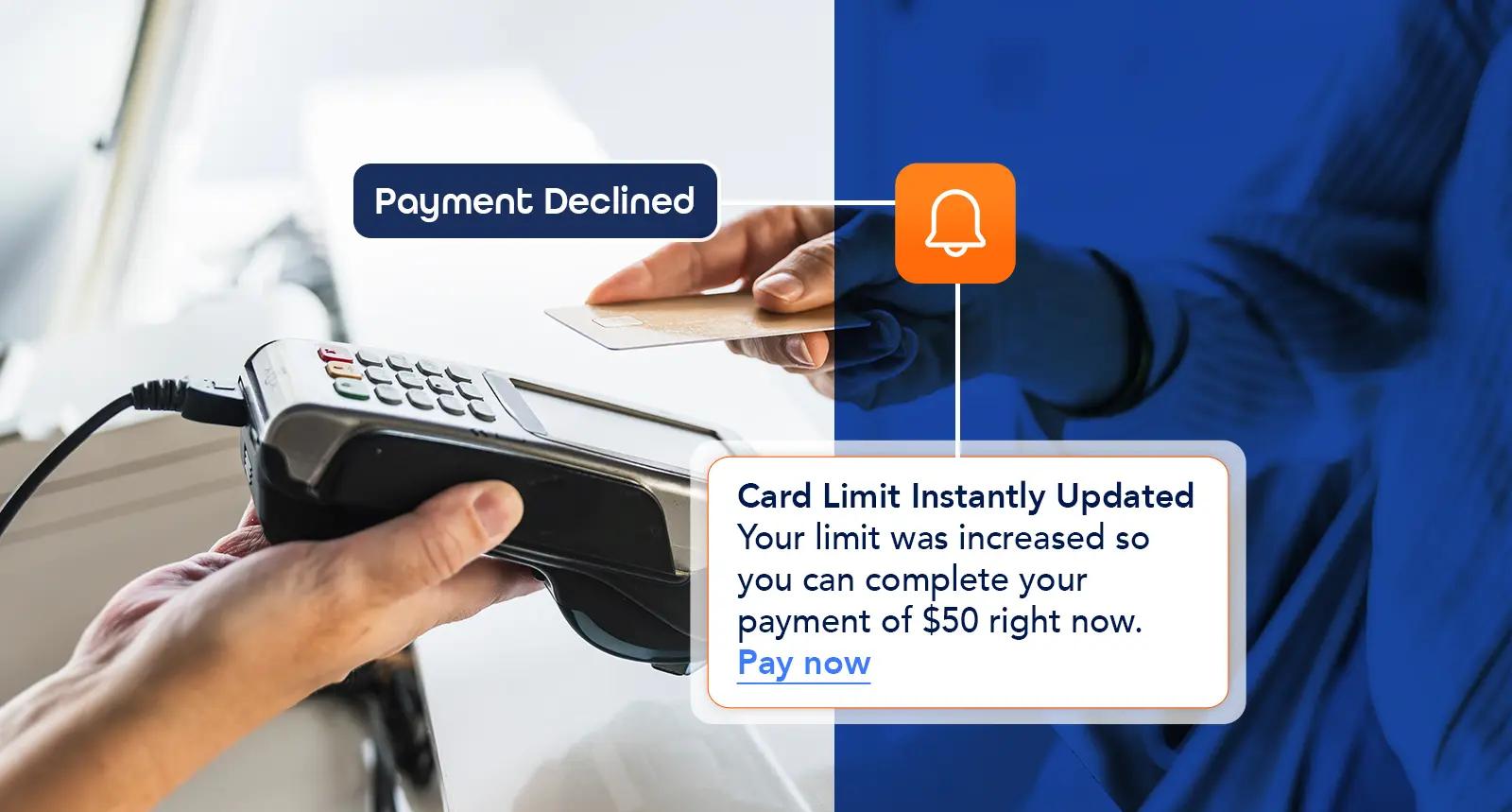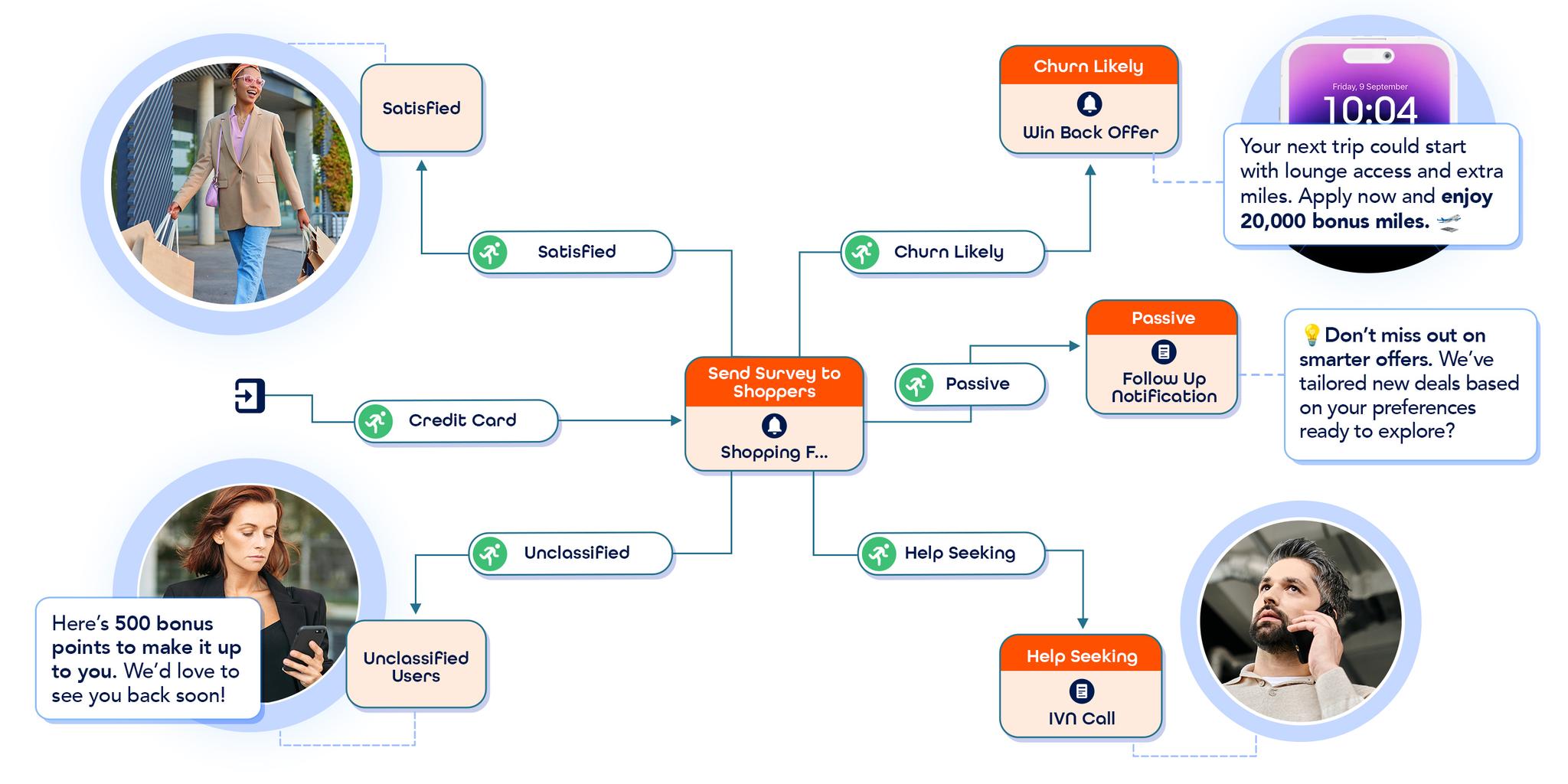- The Evolution of Mobile App Personalization
-
How AI Enhances Mobile App Personalization
- Behavioral Analysis
- Real-Time Personalization
- Natural Language Processing (NLP)
- Smart Segmentation
- Continuous Learning and Optimization
-
The Benefits of AI‑Powered Mobile App Personalization
- Increased User Engagement
- Higher Conversion Rates
- Improved Customer Retention
- Efficient Resource Allocation
-
The Challenges in Implementing AI‑Driven Mobile App Personalization
- Data Quality and Integration
- Privacy Concerns and Regulations
- Algorithm Bias
- Resource Requirement
-
evamX: Revolutionizing Mobile App Personalization with AI
- Unified Data Integration
- Privacy‑First Personalization
- Bias‑Free AI Models
- Scalable AI Solutions
- Enhanced Engagement and Retention
In today’s mobile-first world, getting users to download an app is only half the battle - the real challenge lies in keeping them engaged. With thousands of apps vying for attention, user expectations for seamless and personalized customer experiences have never been higher. That’s where real-time data comes in.
By powering mobile app personalization with live insights, brands can respond to user behavior as it happens, creating timely and relevant interactions that improve retention and drive long-term loyalty.
In our previous blog post, we looked at how AI technologies such as Natural Language Processing (NLP) and smart segmentation are transforming mobile app personalization. This time, we’ll be exploring the role of real-time data in driving personalized experiences that keep users coming back.
Real-Time Data: The Backbone of Personalization
Personalization thrives on context, and context changes fast. What a user is doing right now, where they are, what they just clicked, or how long they’ve been inactive can all be signals for how to engage them more meaningfully. Real-time data enables mobile apps to capture these signals instantly and respond with personalized recommendations, offers, or experiences while the user is still engaged.
Unlike batch-processed or historical data, which is useful for long-term insights, real-time data fuels immediate decision-making. Here are a few examples of real-time data in action:
1. Event-Driven Triggers
Event-driven triggers are automatic responses to specific user actions, such as abandoning a cart or completing a level in a game.
2. Location-Based Insights
By leveraging geofencing technology, brands can trigger location-specific messages or offers as users move.
3. In-Session Behavior Tracking
Based on how a user interacts with the app in real time, such as what screens they visit, how long they stay, or what they tap, the app can instantly adjust the content shown.
4. Engagement Signals
Apps can track signs of disengagement, such as rapid swiping, long pauses, or repeated exits from a screen. When these signals are detected, brands can pause promotions or adjust their app experiences to re-capture the user’s attention.
When combined with AI insights, real-time data becomes an even more powerful tool. The ability to sense and respond in milliseconds is what separates good personalization from truly retention-driving personalization.
From Insight to Action: How Real-Time Personalization Drives Retention
Real-time data is powerful, but it’s what businesses do with it that keeps users coming back. When apps respond to user behavior in the moment, they create experiences that feel intuitive, relevant, and valuable. This kind of responsiveness helps reduce friction, builds trust, and increases the likelihood that users will return.
1. Timely Interventions
Analyzing users for signs of frustration can enable real-time systems to respond instantly by offering help, surfacing a chatbot, or simplifying the next step. These micro-adjustments can prevent churn at critical moments.
2. In-the-Moment Offers
Instead of sending generic promotions hours or days later, real-time engines can trigger contextual offers right when they matter most. For example, offering a discount after prolonged browsing or surfacing a perk via loyalty programs at checkout. These moments of surprise-and-delight boost conversion and retention.
3. Smart Onboarding Flows
New users often decide within minutes whether an app is worth keeping. Real-time personalization allows onboarding experiences to adapt based on what a user taps, skips, or seems interested in. This makes it easier for users to reach value faster, increasing the chances they’ll stick around.
4. Personalized Push Notifications
Real-time triggers can help ensure push notifications are sent when users are most receptive, not just at a scheduled time. Whether it's a reminder about saved content or a gentle nudge to finish onboarding, well-timed notifications feel helpful instead of annoying.
In each case, the key isn’t just personalization, it’s timely personalization. Responding in real time ensures that an app feels alive, attentive, and user-centered, all of which are critical to increasing retention in a saturated mobile market.
Metrics that Matter: Proving the Impact on Retention
Brands that leverage real-time insights often see meaningful improvements across key user engagement and retention metrics.
Here are some of the most telling indicators:
1. Retention Rate
Retention rate measures how many users come back after their first session. Personalized mobile apps utilizing real-time data often see higher Day 1, Day 7, and Day 30 retention rates due to more engaging early experiences.
2. Session Length and Frequency
Session length refers to how much time a user spends in an app during a single visit, while session frequency measures how often they return over a given period. Dynamic product recommendations, personalized content feeds, or just-in-time offers help sustain interest session after session.
3. Conversion Rate
Whether it's signing up, completing onboarding, or making a purchase, users are more likely to act when the experience feels relevant and well-timed. Real-time personalization helps move users toward these goals without forcing it and improves conversion rates.
4. Churn Reduction
Churn refers to the rate at which users stop using an app over time, often after just one or two sessions. By identifying drop-off signals early, such as decreased activity or abandoned actions, and responding in real time with helpful nudges, support prompts, or personalized offers, apps can proactively re-engage users before they disappear for good.
5. Customer Lifetime Value
Ultimately, better retention means more opportunities for monetization. Real-time personalization deepens user relationships, making it more likely that casual users become loyal customers, therefore increasing lifetime value (LTV).
Integration Challenges with Real-Time Personalization
Implementing real-time personalization isn’t without its complexities. To make it work effectively, apps need the right infrastructure, such as real-time data pipelines, AI models, a decisioning engine, and clean integration across platforms and channels. There’s also the added layer of data privacy and compliance, which must be baked into every interaction.
But while the technical lift can be significant, the payoff is hard to ignore. Real-time personalization not only boosts customer experiences, it builds stronger relationships and brand loyalty, reduces churn, and increases long-term value. For businesses with high acquisition costs, even small improvements in retention can translate into major revenue gains over time.
That’s why more brands are turning to AI-powered, omnichannel martech platforms to streamline this process. These platforms make it easier to capture behavioral signals, orchestrate personalized experiences, and respond in the moment without rebuilding an entire stack from scratch.
The Role of a Real-Time Marketing Platform in Implementing Mobile App Personalization
Navigating the complexities of real-time personalization can be daunting, but that’s where an AI-powered, real-time marketing platform becomes a game-changer. Instead of piecing together multiple tools or building infrastructure from scratch, these platforms provide a unified solution designed specifically to capture, analyze, and act on user data in real time across all touchpoints.
By leveraging advanced AI algorithms, these platforms can dynamically segment users and predict behaviors. This allows for hyper-relevant experiences to be delivered at scale on various channels, such as a mobile app, social media, push notifications, email, or SMS.
Moreover, built-in automation handles much of the heavy lifting, such as real-time data ingestion, decisioning, and campaign orchestration, freeing marketing and product teams to focus on strategy and creativity rather than technical overhead.
Most platforms also prioritize data privacy and compliance with regulations such as GDPR, helping businesses build trust with their users while delivering tailored experiences.
An AI-powered, real-time marketing platform doesn’t just solve the technical challenges of personalization, it transforms how brands build lasting relationships with their mobile audiences.
evamX: Boosting Customer Retention with Real-Time Personalization
At evamX, we understand that real-time personalization is essential to keeping mobile users engaged and loyal.
Our AI-powered, omnichannel marketing platform is built to simplify the complexities of real-time data integration, contextual segmentation, and seamless cross-channel orchestration so that you can deliver personalized experiences that resonate when it matters most.








